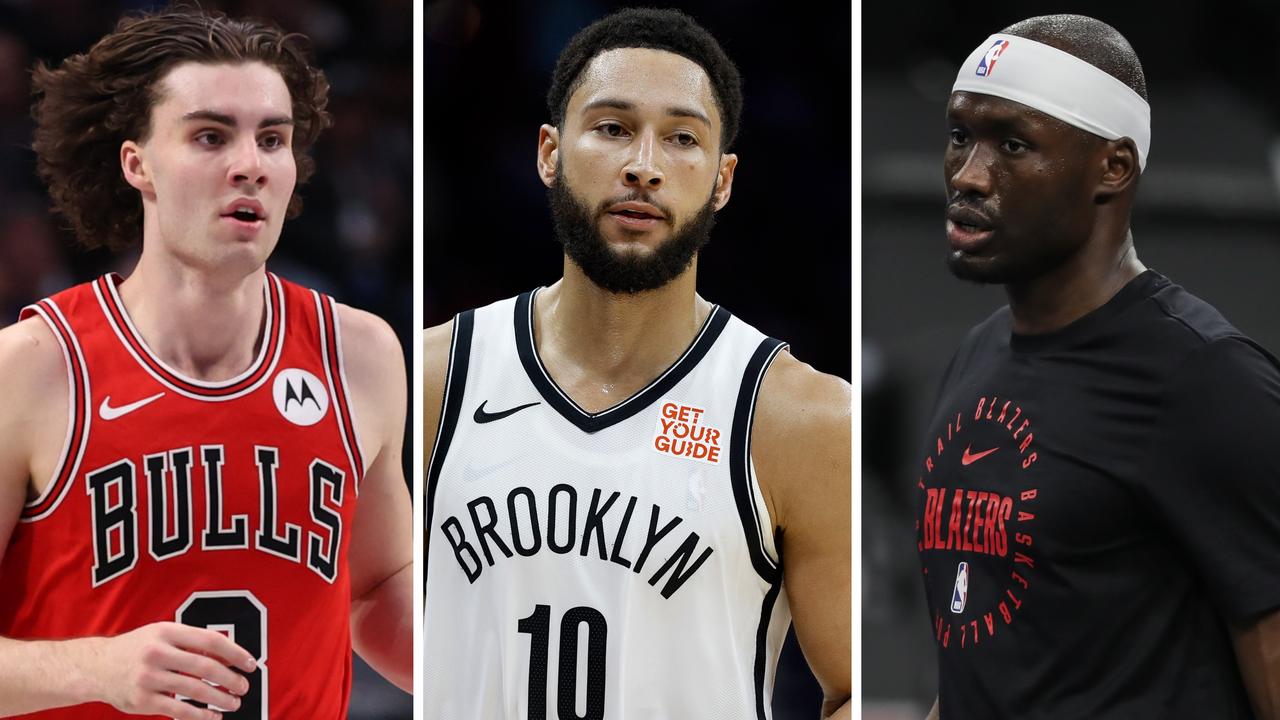Calls for major NBA change that would impact Aussie stars

- by Admin
- November 8, 2024

It was hailed as a new era in the NBA when Steph Curry and Klay Thompson changed the face of the league with their three-point dominant offence that inspired Golden State’s dynastic run from 2015.
Since then, rival teams had been hellbent on combatting their dominance with the same style – turning the NBA into a three-point heavy contest.
But it wasn’t just the Warriors that turned the game on its head in the US – the rise of analytics also played its part.
READ MORE: League great fronts relaunched $325m bid for NRL team
READ MORE: Shock position as Suaalii picked for stunning Wallabies debut
READ MORE: Young gun hits back at Healy’s ‘schoolyard bully’ sledge
A new way of thinking about the game had infiltrated the league with the overriding sense being, if you take more three-point shots, your chances of scoring more points and winning increase.
That led to a major demand for three-point shooters in the league, resulting in position-less basketball, with the centre even expected to be competent from beyond the arc.
Ben Simmons dribbles during a match between the Brooklyn Nets and Chicago Bulls. Getty
In the process several big men across the league were deemed unplayable and were eventually out of the league because they could not keep up defensively on the perimeter, and were limited in their impact offensively.
NBA bosses rode the wave and the trend continues today with reigning champions the Boston Celtics, taking more than half of their total shots (55.1 per cent) from behind the three-point line.
On their day, the Celtics are unbeatable and that was evident on the opening day of the season, when they equalled the NBA record for the most threes made in a game with 29.
The rise in three-point attempts makes for higher scoring games and also leads to more comebacks from bigger deficits.
While that creates several narratives NBA bosses would love to promote, it appears the prominence of the three-point shot could be on the nose with the competition’s decision makers – and has not helped the current rising crop of Australian players in the NBA, few of whom are highly regarded for their three-point shooting.
Former ESPN analytics expert Kirk Goldsberry revealed NBA executives have considered tinkering with the three-point line for some time, and said he was approached by NBA CEO Adam Silver in 2019 to discuss potential changes to the three-point line.

Aussie Josh Giddey of the Chicago Bulls. Getty
“We got it to the competition committee and we were going to try it in the (second tier) G-League, two or three different looks in the G-League,” he told The Bill Simmons Podcast.
“One (option) was to get rid of the corner three entirely, which is very drastic.
“In fact I think it was (former Celtics coach) Brad Stevens, who was on the competition committee, who was like ‘Hell no, you’ll never see a slam dunk again. This is going to ruin spacing’.”
“I think the better one is to keep the corners where they are but extend the three-point arc, which is currently 23.75 feet, get it out to 25 or 26 feet.
“But again, does that mean we’re just watching more missed threes? The same number of threes but fewer makes, because that’s not great.
“I think we’ve got to see it in practice to see what it would look like before we would engineer the right product.”
It’s understood if the NBA does change the three-point line, it would likely first be trialled in the second-tier G-League, pre-season or even February’s All-Star Game.
If the move to extend the perimeter line is passed, it could actually be beneficial to Aussie players like Ben Simmons, Josh Giddey and Dyson Daniels who aren’t known for their three-point prowess.
Giddey’s inconsistency with his three-point shot last year led to the OKC Thunder to trade him and Simmons’ shooting woes are well known, while Daniels is more of a defensive player.
But if the league chooses to extend the three-point line, more value could be placed on scoring around the basket, because it would prove too difficult from long range for players who don’t regard themselves as specialists like a Curry or Damien Lillard, potentially playing into the hands of Simmons and Giddey.
The NBA originally shortened the three-point line in the 1990s to encourage more points, with the league experiencing a major decline in scoring.
The dip began in 1988 through 1994 as the average of total points scored per game significantly decreased from 109.2 to 101.5 points.
But the NBA now has a completely different problem on its hands.
“I’d love to see the NBA move the line,” Goldberry added.
“It’s time to move the line. I think the shot has become too easy for too many guys.
“I’d like to see it a little more difficult for the average player. It’s only going to make Stephen Curry or Damian Lillard more valuable – guys who can shoot from deeper will become more valuable when the shot’s harder. I think it celebrates those guys a little bit more.
“I always joke it should be called the two-point line, once we take more than half of our shots from behind it.
“Every other league on the planet that matters – the WNBA, college basketball, FIBA — they’ve all moved the lined back this century. The NBA’s the only one that hasn’t.”
The Latest News
-
December 22, 2024Zheng Qinwen to Kick Off 2025 Season at Australian Open | Sports-Games
-
December 22, 2024Indian team’s Vice-captain has a wholesome exchange with an Australian sports Team: Share jerseys before Boxing-Day Test
-
December 22, 2024Australian cricket could be burned by missing generation of players
-
December 21, 2024Australian media and India clash during restricted presser
-
December 21, 2024With son, Tiger Woods has shot at lifting first trophy in 5 years – Australian Golf Digest





